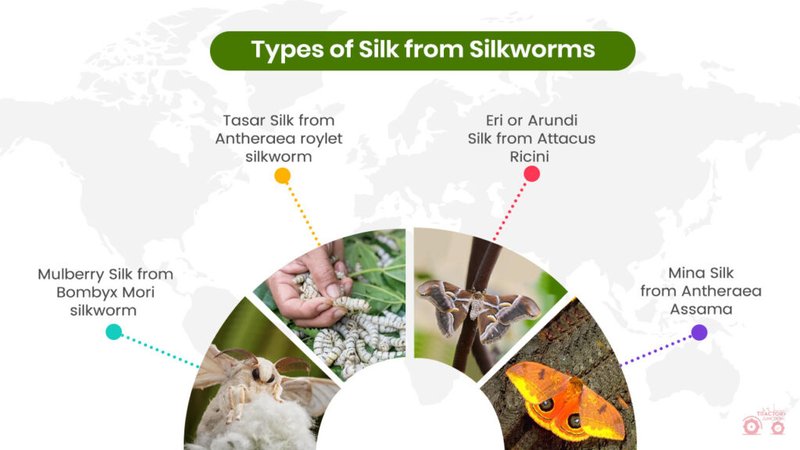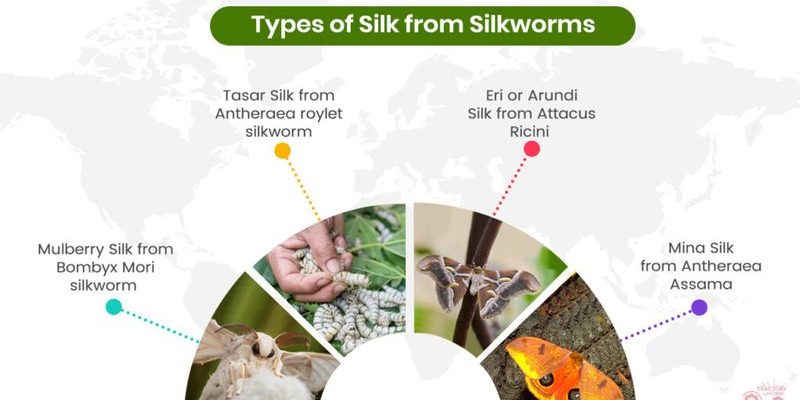
Imagine silkworms like nature’s little creators. They munch on mulberry leaves, spin their silk, and leave behind waste that’s rich in nutrients. This waste, known as *sericin* and *silkworm feces*, has sparked interest among farmers and gardeners who are curious about its potential as an organic fertilizer. It’s like finding hidden treasure in a normal day. So, is this treasure real? Let’s break it down together.
What Is Silkworm Waste?
Silkworm waste is essentially the leftovers from the silkworm’s life cycle. After these little critters spin cocoons to create silk, they produce waste that contains various organic materials. This waste comprises *sericin*, a protein that helps bind the silk fibers, and other nutrients that can be beneficial for soil health.
But it’s not just any waste; it’s a treasure trove of nutrients! Think of it like the compost of the insect world. When silkworms eat mulberry leaves, they convert them into a nutrient-rich organic substance that enhances the soil’s quality. It’s a natural fertilizer, packed with essential elements that plants crave: nitrogen, phosphorus, and potassium.
Understanding what goes into silkworm waste helps to appreciate its potential as an organic fertilizer. Essentially, it is a product of nature’s recycling process, transforming food into something that can nourish the earth.
Benefits of Using Silkworm Waste as Fertilizer
There are several reasons to consider silkworm waste as an organic fertilizer.
- Nutrient-Rich: Silkworm waste is high in nitrogen, phosphorus, and potassium, which are crucial for plant growth. These nutrients contribute to healthy root development, flowering, and overall plant vigor.
- Improved Soil Structure: Using silkworm waste can enhance soil texture. It helps improve aeration and water retention, making it easier for plants to thrive.
- Eco-Friendly: There’s something incredibly satisfying about recycling waste into something useful. Using silkworm waste reduces reliance on synthetic fertilizers, which can harm the environment.
- Pest Resistance: Some studies suggest that the organic matter in silkworm waste may help plants resist pests and diseases, giving them a natural defense.
Each of these benefits reflects not just the science behind silkworm waste but also brings a touch of nature’s magic into our gardening practices. So, the next time you think about enriching your soil, silkworm waste could be a green alternative worth exploring.
How to Use Silkworm Waste as Fertilizer
If you’re convinced that silkworm waste is worth a try, let’s talk about how to use it effectively in your garden.
1. **Dried Form**: If you can source dried silkworm waste, it can be mixed directly into the soil. Just sprinkle a layer over your garden bed and work it into the top few inches of soil. This allows the nutrients to integrate seamlessly.
2. **Liquid Fertilizer**: You can create a liquid form by soaking silkworm waste in water for a few days. Use this nutrient-rich solution to water your plants. It’s like giving them a power drink!
3. **Composting**: If you’re already composting, you can add silkworm waste to your compost pile. It enriches the compost and helps improve its nutrient profile.
Each method lets you tap into the benefits of silkworm waste while catering to various gardening practices. Just remember to start small and observe how your plants respond before making it a staple in your gardening routine.
Potential Concerns with Silkworm Waste
While there’s a lot to love about silkworm waste as fertilizer, it’s essential to be aware of a few potential downsides.
– **Quality Control**: Not all silkworm waste is created equal. Depending on what the worms were fed, the nutrient content can vary significantly. Always source from reputable suppliers to ensure quality.
– **Odor**: Some people report that silkworm waste can have an unpleasant smell, especially in larger quantities. It’s similar to other organic fertilizers, so if you’re sensitive to odors, use it sparingly.
– **Over-Fertilizing**: It’s easy to get carried away with goodness, but over-applying any fertilizer can harm plants. Stick to recommended amounts to avoid nutrient burn.
Being aware of these concerns helps you make informed decisions. After all, good gardening is as much about knowledge as it is about practice.
Comparing Silkworm Waste to Other Organic Fertilizers
Now you might be wondering how silkworm waste stacks up against other popular organic fertilizers. Let’s take a quick look at some comparisons.
| Fertilizer Type | Nutrient Composition | Benefits | Drawbacks |
|——————|———————|——————————|————————-|
| Silkworm Waste | High in N, P, K | Soil structure, eco-friendly | Odor, variable quality |
| Cow Manure | Moderate N, High P | Improves soil fertility | Can carry pathogens |
| Compost | Varies | Recycles waste, balanced | Takes time to produce |
While silkworm waste shines in its own right, each type of organic fertilizer has its unique benefits and drawbacks. It’s all about finding what works best for your gardening style.
So, after breaking it all down, is silkworm waste a myth or a fact? Honestly, it’s a fact! Silkworm waste is a valuable organic fertilizer that can improve soil health and boost plant growth. With its nutrient density and eco-friendly appeal, it’s worth considering for your gardening needs. Just remember to source quality waste, use it wisely, and pay attention to your plants’ reactions.
Gardening is a journey, and exploring new avenues like silkworm waste adds a layer of creativity and sustainability to your practices. Whether you’re a seasoned gardener or just starting out, embracing silkworm waste could lead to discovering the benefits of nature in a whole new light!

